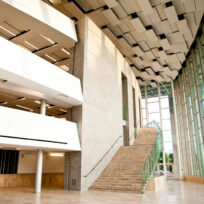Anyone who’s been to high school can tell you that within those walls lies a special kind of kingdom. Each school develops its own culture and its own approach to learning. That identity, as every student and teacher knows, is mainly a reflection of the administration – of their Principal. For all its challenges and headaches, there are few career paths that offer the same opportunity to shape an institution in your own image.
A principal’s importance to a school’s success is often misunderstood, and in policy terms, it’s been proven to be vastly understated. Replacing a bottom-tier principal with a top-tier one has a greater impact on student learning than virtually any of the expensive educational interventions funded by the state. The principal sets the tone, and the scope of their influence is unmatched. It’s seen in every area of the school – in lesson plans, in teacher morale, in the learning environment, everywhere.
So what makes a good principal?
Since most principals are former teachers, it’s safe to assume that they share many of the same qualities. While that’s true in many areas, there are some key traits that identify educators who could become successful administrators.
Peter Kalbfleisch, a Vice Principal in the Waterloo (ON) Region District School Board, began his career as a physical education and science teacher at University Heights, a school designed for in-risk learners and students on their way to the world of work. The path he took to becoming a Vice Principal exemplifies the kinds of skills and interests that could help a teacher make the jump into becoming a great principal.
“When I started at University Heights, there were lots of opportunities to take on leadership roles,” says Peter. “I became the student council lead teacher, and the student activity director. And I was also a coach for various athletic teams. I found that I was having as much, if not more of an impact on the kids outside of the classroom.”
At his next school, Peter headed up a program called Fast Forward, which continued his focus on providing opportunities for students who were preparing to enter the workforce. In his five years of leadership, the program demonstrated huge successes.
“I naturally gravitated towards those positions in the school where I could have a hand in designing the program and determining the scope.”
Peter set a goal of transitioning into administration. “I fulfilled the requirements, and completed the qualification program. And after six years as a Vice Principal, I can say I’m really happy I took those steps.”
Every school has those teachers who take on after school programs or start interesting clubs. There are culture-builders amongst all educators, and they’re usually not too hard to find. It’s imperative to the success of our school systems that these potential principals are identified and nurtured, and given the resources to transition and succeed on the administrative level.
“When I started as a teacher, I had no special degrees or goals to reach administration,” says Peter. “But I had people within the system encourage me to explore it based on the path I’d taken. I was driven to make sure that nobody quit on any of our students, and that they didn’t quit on themselves. And now, as a Vice Principal, I can make that our top priority.”
There’s a shortage of good principals throughout our educational system. And there are few areas where an upgrade could have more of an impact.
It’s a tough sell for a lot of people who would succeed in the role. There are so many challenges. It can be thankless. The pay is not competitive for a similar skill set or degree. That could certainly be addressed.
But if you’re a teacher who has strong ideas about how to make a school better, you’d be doing us all a great service if you went ahead and did it. Dedicate yourself to becoming a Principal and creating a culture of success for your students and your staff. And if you’re truly driven to it, become an advocate for greater pay and more support for our administrators, who are absolutely vital to the success of our schools.



